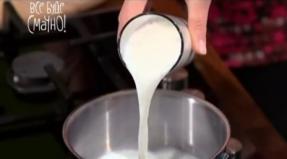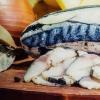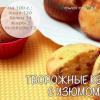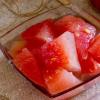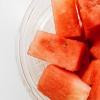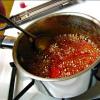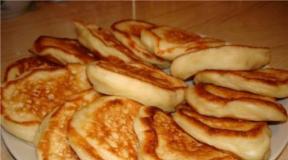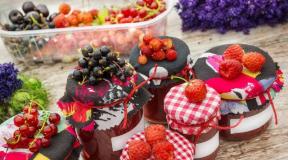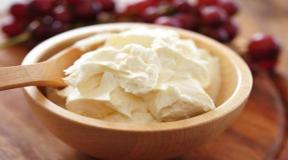Baykhovy green tea. Benefit and harm
When buying tea in packaging, we are deprived of the opportunity to examine the contents, smell it, or at least evaluate the appearance. In this case, it remains only to be guided by the data that the manufacturer indicates on the label. On the packaging you can read about the type of tea, the country of origin, quality marks indicating the purity of origin and control over its production, region of growth, variety, expiration dates. Special designations in the letters of the Latin alphabet indicate the manufacturing technology, size and quality of tea leaves. You can often see the inscription "long tea" on the label. It will not be superfluous to find out what it is.
What is long tea
To understand what long tea means, you need to know that after processing, all tea is divided into three main groups:
- Baykhovy.
- Pressed.
- Extracted.
The last group includes instant drinks, which are produced in liquid or powder form. Pressed tea, as the name implies, is pressed. However, its main difference is not in the shape that it is given (tile, disc or brick), but in the quality of a tea leaf. The coarsest raw materials (shoots of tea bushes and mature lower leaves) are pressed into bricks, and tea leaf crumbs and dust are used for pressing the tiles.
Long tea is the most common type, which is considered loose in our country, since its tea leaves are not connected with each other. But this interpretation of this term is not entirely accurate. The word "baikhovy" comes from the Chinese "bai hoa", which translates as "white eyelash". This is the name of the tips present in its composition - unblown leaf tea buds with white villi.
The more buds in tea, the more valuable and high-quality it is, the more refined its taste and aroma. In ancient times, Chinese tea traders sold their wares to Russian merchants, repeating the word "bai hoa" to emphasize its value. The merchants, without going into the intricacies of translation, realized that this word is almost synonymous with high quality.
In the future, all high-quality loose teas were called baikhov, in contrast to pressed teas, which were made from raw materials of inferior quality. This name has stuck to them to this day. Depending on the technology and methods of processing the tea leaf, black (or red), green, white and yellow long tea, as well as oolong tea, are distinguished. The quality and taste of each of these types still depends on the presence of tips in the composition, as well as on their quantity.
Long green tea

Long green tea is usually divided into two types: leaf and broken (cut). The second category differs from large leaf tea, which has whole leaves without damage. Green, unlike black tea, practically does not undergo fermentation (oxidation) and retains much more biologically active substances. Its infusion has a yellowish-green hue. The best is the drink with the lightest infusion.
Long tea
Black long tea differs from green tea by the method of production. With the existing method of processing and receiving, it goes through the stages of drying, rolling, fermentation and final drying. By the size of the tea leaves, it is divided into three types:
- sheet;
- broken;
- small.

The first category includes large leaf black tea. Broken, or, as it is also called, "broken", contains medium-sized tea leaves, and the small category includes seedings and crumbs. Each of these groups, in turn, is subdivided into categories depending on the quality of the raw materials that are used for production. The sheet is divided into four categories, the middle one is also into four, the broken one into two. Each of the categories is designated by the corresponding Latin abbreviation, in which all letters have their own meaning, for example:
- T. - "tippy", tea tips, thanks to which the drink acquires a delicate aroma and taste.
- S. - "special", selected, exclusive black long tea.
- O. - "orange", young whole twisted leaves.
- P. - "pekoe", mature leaves without tips.
- B. - "broken", a broken tea leaf.
- D. - tea crumbs.
Black long leaf tea has tea leaves of a very dark color, almost black. The more firmly the tea leaf is twisted, the higher its quality is considered.
Other species
In addition to green and black, other types of long tea are also produced:
- Yellow. In China, it is made from high quality raw materials and is called "imperial". It goes through the following processing stages: drying, steaming (light roasting), curling and drying. This type of tea belongs to the weakly fermented. Its infusion has a scent with floral notes and has a significant tonic effect.
- White. This species is considered elite and is made from tips and young leaves. Has an almost colorless infusion, rich aroma and rich taste.
- Oolong. It is obtained by withering, rolling, short fermentation, frying, re-rolling and drying.
Benefit and harm
The benefits and harms of long tea are due to its chemical composition. The most valuable substances found in tea leaves are:
- vitamins A, groups B, C, PP, K;
- essential oils;
- tannins;
- trace elements (iron, magnesium, potassium, etc.);
- polyphenols (tannins, catechins, etc.).
It should be noted that the absence of a fermentation stage preserves a large number of useful elements in green tea. It contains almost ten times more vitamin C than black, and almost twice as much catechins, which have strong antioxidant properties. As for the harm of the drink, this applies, first of all, to the content of caffeine. To minimize its effect on the body, you should not consume strong brewed tea in unlimited quantities.
Manufacturers

Black and green long packaged tea, like other types of tea, are produced today by many tea powers. The main manufacturers are:
- China. Green tea produced in the southeastern provinces of China has always been considered one of the best. Today he also confidently holds the palm.
- Sri Lanka. The best black long tea is produced here, which is known as Ceylon (since the former name of this island is Ceylon). High mountain tea produced in Sri Lanka is considered practically the standard of taste and quality.
- India. Indian tea may well compete with Ceylon tea in its taste, but it is slightly inferior to it.
Long tea is also grown in Georgia and southern Russia. Krasnodar variety "Extra" is produced from the leaves of high-mountainous tea bushes, which are harvested and processed by hand. It is considered the northernmost tea in the world. Recently, a packaged drink is gaining popularity, produced by many manufacturers. It can be either black or green. Often it is very small fractions of tea leaves, dust and crumbs placed in a bag. Manufacturers can also produce high-quality expensive long tea in bags, but this is much less common.
There are more than a hundred types and varieties of tea that you can taste today. The most enterprising people here are the owners of the tea market - the Chinese, who offer a great variety of green, black, white, red and other types of tea. Reading the information on the packaging, you can often come across the term “baikhovy”. How to understand it correctly and what does it mean?
What is baikhovy
The concept of long tea comes from the Chinese phrase "Bai hao", but in modern terminology it does not mean exactly what the inhabitants of the Celestial Empire meant. Translated from Chinese, this phrase literally means "white eyelashes". In the narrow sense of the word, the Chinese wanted to convey with such a poetic name the high quality of tea, which included tea buds, small, covered with light villi, resembling closed eyelashes.
At the dawn of trade relations between China, Russia and Western countries, when all the subtleties of tea production were known only to the Chinese themselves, the concepts of bai hao began to be associated with a product of the best quality, and therefore high cost. Very soon, loose tea, regardless of the type, began to be called baikhov, it was simpler and clearer that way.
What does long tea mean today? This is the designation of packaged loose tea, be it black, green, white or other types. This term provides basic information about the contents of the pack. Indeed, in the world there are tiled, extracted, granulated and other types of tea, which have completely different designations.
The quality and taste of any long tea depends on the proportion of tips - unblown pubescent buds in its composition. The more there are, the more aromatic and delicate the taste, the more antioxidants, vitamins and other useful substances it contains.
The main producers of loose teas are:
- China;
- India;
- Sri Lanka.
It is produced in Russia in the Krasnodar Territory, Georgia, Japan, but in much smaller volumes. In general, there are many varieties of long tea in the world, but the most widespread are black, green, red and white. They can be large-leaved and small-leaved, represent a crumb, made from leaves collected in different seasons of the year, and therefore have completely different taste and aromatic qualities.
Black long
This type of tea is considered the most widespread in the world. In the process of its production, it is assumed that freshly harvested raw materials will pass through the following stages:
- withering;
- twisting;
- fermentation;
- drying;
- final dry sorting.
Black long tea, according to the results of sorting, is divided into whole leaf and small-leaf broken
The best tea is considered to be large-leaf tea marked L-1, which means that the product contains the upper young leaves and unblown buds. A good tea should be curled black. The stronger the sheet is twisted, the better it is considered. If the color of the tea leaves is brown with gray marks, or instantly crumbles if you take it with your hands, then this quality should be questioned.
In general, the assessment of the quality of long tea includes many criteria. These are the size and shape of tea leaves, aroma, sowing content, chemical composition, climatic conditions, and so on. If we talk in general about the composition of the tea leaf, then the most valuable in it are:
- vitamins A, C, PP, K, group B;
- extractive tannins;
- polyphenols (tannins, caffeine, catechins, etc.);
- essential oils;
- minerals, etc.
Black tea contains a lot of iron, potassium, magnesium, ascorbic acid, phosphorus and calcium. Factory teas, whether they are bouquet, premium, first grade, and so on, are determined at production by specialists by teasters during the tasting process. They monitor physical and chemical indicators, compliance with technical conditions and standards. The content of caffeine (from 1.8 to 2.8%) and tannin (from 8 to 11%) must be checked. The best black long tea is produced in Sri Lanka. Ceylon Alpine is considered to be the standard of quality and taste. The Indian can compete with it, but its taste and aroma properties are inferior to the Ceylon one.
Bulk tea is sent to tea-packing factories in sealed plywood boxes, which are lined with foil or other materials inside. In this form, tea can be stored for about 5 months.
Long green
Long green tea is produced using a different technology. There is no leaf fermentation step here. That is why the tea leaves remain green, more aromatic and retain the maximum amount of nutrients. The best at all times was considered Chinese loose tea, the production of which is concentrated in the southern and southeastern regions of the country. The green baikhov product contains twice more tannins and catechins than the black one, and almost 10 times more ascorbic acid. That is why this species is included in the list of the most powerful herbal products that have antioxidant properties.
When choosing this product, it is important to pay attention to the color and integrity of the tea leaves. The lighter and softer the color, the better and healthier the product. Most likely, during the production process, all standards were preserved, the leaf was not overdried or overheated, which allowed it to preserve both the brightness of color and saturation with antioxidants. After brewing, which is done with slightly standing and cold boiled water, you should get a transparent drink of muted green color. A variation from light green to turquoise is allowed here. It is believed that the lighter the color of the infusion, the more tips in the infusion.

The current standard divides all produced tea into leaf, fine and crumbs. Within the standard, there is a more detailed division depending on the size of the tea leaves and other characteristics.
Other species
Other types of loose tea include white, red, yellow.
- White is a representative of the elite. It is the best of its kind and the richest in composition. It is made from young leaves of the spring harvest and tips. They undergo weak fermentation, after which white villi become pronounced on their surface. The infusion of this tea is almost colorless, the strength is high, the aroma is rich and delicate at the same time. This tea does not curl.
- Yellow is considered the most difficult in terms of production technology. It uses 2 types of sheet processing - steam and drying with wither. Later, the two types of processed leaves are mixed and rolled. Tea is included in the list of exotic varieties. Has a pronounced invigorating effect.
- Red is also complex in terms of production technology. Here the leaf undergoes three fermentation, which is not brought to the finish. Thanks to this, the edges of the leaves acquire an interesting red color. This drink has a very delicate taste and has a long shelf life.

These teas have not found such widespread popularity in the world as black and green teas. Why? This is because it is very difficult for a non-professional and a person far from the tea business to appreciate their delicate and unusual taste.
Manufacturers
There are many tea-packing factories in the world. Some are located in the immediate vicinity of its production, others in completely different regions, where bulk tea is supplied in special sealed containers of 50, 100 or more kilograms. In the domestic market, the most popular brands of long tea are Greenfield, Ahmad, Dilmakh, etc. Their assortment includes dozens of types of tea grown in different parts of the world. The main part of the production is made up of Indian and Ceylon baikh products of the bouquet variety.
Indian and mostly black, with a pronounced strength and even astringency. Chinese are more delicate, aromatic, mostly green. Most of the world's red, green, yellow and white teas are produced here.
Kenya has become quite successful in business, having come to the market quite recently. A tart tea with a beautiful amber hue is produced here. These are mostly black varieties. Japan only produces green leaves, black and others are not popular here. The Japanese Gekuro, Match and Genmaicha are known all over the world.
Baykhov tea is a product that has already conquered the world. It is preferred by more than half of tea lovers in general. It is affordable, easy to prepare, healthy, and comes in a huge assortment.
Perhaps one of the most ancient and noble drinks is the well-known tea. It is not without reason that whole tea-drinking ceremonies are dedicated to him, as well as many ancient legends, stories and legends. If, for example, there is a constant debate about the usefulness of coffee, then almost all opponents about tea come to a consensus that it can and should be drunk.
Antioxidants, contained in large quantities in this aristocratic drink, help the human body to cope with various kinds of diseases, including cancer. In addition, daily consumption of tea significantly improves mood and general health of a person.
Today supermarket counters offer tons of different colorful tea wrappers. Black, green, long, herbal, fruity - there are a lot of them now, and any of them are provided by hundreds of brands. For many decades, the so-called long tea has been especially popular with consumers, which appeared in our diet during the period of the beginning of purchases from China. Many believe that this term is called black tea, packaged in loose packaging. But in essence, this is an erroneous opinion. Where did this name of the drink come from and what does it mean?
For a long time in China there is a very uncommon, and therefore really not cheap, sort of tea, referred to as "bai hao". In fact, it is one of the types of white tea, which contains slightly opened rudiments of leaves with small white villi. That is why, translated from Chinese, the name of this drink sounds like "white eyelash". It is generally accepted that the more such buds are present in the main composition of tea, the more it is valued.
Merchants who offered their goods to customers to emphasize the value of tea, repeated "bai hao" all the time for advertising purposes. Their clients who do not speak Chinese, without going into much detail, decided that this phrase denotes the highest quality of raw materials. A little later, this term began to denote varieties of loose teas - in order to be able to distinguish it from pressed tea.
 This is what real long tea looks like.
This is what real long tea looks like.
In fact, genuine long tea, which has the extended name "Bai Hao Yin Zhen", is classified as expensive. And this tea grows exclusively in places with good ecology and suitable weather conditions. A feature of its collection is only a manual method of plucking the tops of the shoots, in addition to everything, only poorly opened buds with a silvery bristle are selected.
Not everyone is allowed to the process of collecting tea, but only those who lead a correct lifestyle, do not use alcohol and tobacco, do not use cosmetics and do not use pungently smelling spices in the preparation of food. The raw materials collected on the plantations should not contain extraneous odors - that is why such actions are taken.
 Long tea collection process
Long tea collection process
The tea leaves are steamed and then hand dried. The villi acquire a silvery color, and the tea itself becomes incredibly fragrant and mouth-watering.
In fact, different parts of the plant are used to make different types of tea. Not only buds are used, but also young shoots, upper and lower leaves, as well as flowers, while the methods of their processing also differ significantly. And very enterprising traders helped to spread the name "baikhovy" to almost all tea varieties. And at the moment, the consumer calls the drink this way, which does not always have the properties of white silver tea.
Composition
The tea plant itself resembles a bush up to 1 meter high. The highest quality drink is considered to be made from the leaves collected at the tops of the shoots. The main composition of the tea leaf includes:
- Tannins- a mixture of various compounds that make up more than 30% of tea. By the way, green tea has much more of them than black tea. It is the tannins that form the aromatic components of tea during the oxidative stage, allowing us to enjoy the aroma of the finished drink.
- Essential oils- make it possible to hear the real smell of tea leaves. Unfortunately, when processing raw materials, essential oils quickly evaporate, remaining in an amount of no more than 20-30%. But at the same time, in this process, new essential oils appear, duplicating the smells of citrus fruits, flowers, vanilla, etc., creating a new unique bouquet of tea. Incorrect brewing of a drink or improper storage conditions for dry tea often lead to the irreversible loss of essential oils smells.
- Alkaloids- a special tonic component, also called tannin or caffeine. There is a little more of this element in a tea drink than in a coffee one, however, it acts much softer. A useful feature is the fact that caffeine taken with a tea drink is not retained in the human body. And this means that even with a large amount of tea consumed, a person has no way of getting poisoned. In addition, the other type of alkaloids present here - theobromine and theophylline - have the ability to dilate blood vessels and are characterized by good diuretic properties.
- Amino acids- about 17 units of them are found in tea, while they largely contribute to the restoration of the exhausted human nervous system. In the process of producing tea raw materials, they also take an active part in creating the aroma of the drink.
- Pigments- components in the composition of the drink, guaranteeing it a rich color. Chlorophyll is the most abundant in green teas, carotene and xanthophyll are characteristic for black teas.
- Vitamins- an extremely wide range of their presence makes it possible to use tea as a truly healing drink. Provitamin A allows you to maintain good vision, a whole group of vitamin B regulates the endocrine glands. Nicotinic acid (vitamin PP) makes it possible to level the body's allergic reactions to various irritants. Ascorbic acid (vitamin C) enhances immunity, and in cooperation with vitamin P, it accumulates and is stored very well in the human body.
- Squirrels- substances that supply the body with amino acids. Green teas are especially rich in proteins.

Why is real long tea useful?
Silvery villi (tips), which are the main component of this type of natural tea, are not characterized by certain special properties. Their purpose in the composition of a tea drink is to increase the effectiveness of the positive effect of tea on the human body. So what exactly is this tea for?
First of all:
- it has excellent antibacterial properties;
- it can be used as a drug against colds and various viruses;
- strengthens blood vessels well;
- stabilizes metabolic processes and cholesterol levels in the body;
- prevents the appearance of kidney stones;
- in some cases, it regulates the level of hemoglobin in the blood;
- allowed as a prophylactic agent for jaundice and some other diseases.
If your eyes are tired in the evening, small cotton swabs moistened with warm strong broth of black long tea will help relieve tension. With conjunctivitis, rinsing the eyes with the same solution is allowed. Nausea and vomiting can be overcome with strong black tea. Tea also helps with stomatitis and gingivitis - rinsing the mouth will prevent the effects of microorganisms - the causative agents of these diseases. The large amount of fluoride in this drink can be a good prevention of tooth decay with several cups of good tea a day.
Along the way, it is worth noting that the effect of tea on the human body depends not only on the quality of the drink, but also on the method of its preparation, as well as on the variety and type of raw material. For example, red and black long tea are extremely invigorating, since they have a bright smell and a very pronounced taste.
Are there any restrictions?
However, despite the fact that such a drink is very beneficial, you should not fanatically drink it in unlimited quantities. The average daily dose of this drink should be no more than 5 - 6 cups.
- People who don't respond well to caffeine should avoid it. You especially need to be attentive to yourself in cases where, after a cup of tea, a person develops unmotivated irritability, irascibility, palpitations, nervousness and headaches.
- Also, pregnant women do not need to get carried away with long tea. In no case should you drink medicines with this drink - the tannins contained in it can radically change the effect of the medicine, causing unforeseen health consequences. Not a very good effect of black tea on the condition of the surface of the teeth was also noticed. So that the enamel does not darken, experts advise you to thoroughly brush your teeth after drinking tea.
- Yesterday's brewing is also very harmful. Drinking the drink must be exclusively freshly brewed and in no case pour boiling water over the tea leaves.
Types of long tea
To fully experience all the facets of the taste and aroma of this magical drink, tea does not need to be sweetened before drinking and, moreover, it is not necessary to jam it with anything. Modern manufacturers of long tea offer many different varieties and subspecies, but five types of this drink are considered the main ones:

- Black tea
This is perhaps the most widespread and most sought-after of all long tea. A drink made from dry tea leaves must be black. If floating gray or light brown tea leaves are found in the cup, then you should think about the quality of this variety. It is also advisable to pay attention to the degree of curling of the sheet - the denser it is, the higher the quality of the product is. If the leaves are sluggish or crumbling, it means that such a drink does not belong to the category of high-quality ones. In stores, you can find black tea in whole leaf and small leaf form. In this case, the advantage should be given to the first type, since such tea better retains its inherent aroma and taste, and also does not fizzle out so quickly.
- Green tea
This drink is considered the most aromatic of the five. The preparation of raw materials for this tea involves a number of procedures in a certain sequence. It is steamed, dried according to Japanese technology, and can also be twisted according to the Chinese method into a small pea. After steaming, the finished tea has a distinct green color. Although, in some cases, different variations of green and light green shades are allowed. The criterion for the quality of this tea is precisely the saturation of its color - the lighter it is, the better. Only scrupulous adherence to all the necessary technologies guarantees the safety of the unique healing properties of the drink.
- Red tea
Red teas have a much longer shelf life than green and black teas due to the complex preparation process of the main raw materials. Its main distinguishing feature from the two previous types is its incredibly delicate taste, as well as an interesting color of the leaves. Along the edge they are similar in color to black tea, and inside the shade is identical to the color of green tea. In the process of preparing raw materials, the method of partial fermentation is used, after which the leaves are dried and curled. Such procedures are repeated at least three times.
- Yellow tea
Those who have tasted yellow tea at least once will never forget and confuse its taste with any other. The process of preparing the raw materials for this drink is very complicated. One part of the leaves is dried and dried, the other is steamed. Then both parts are mixed and curled. Due to the original specific taste, this tea is classified as exotic.
- White tea
By the degree of healing, this tea is many times superior to all others. Its basic base is green tea, which is produced using low fermentation. Tea leaves, after preliminary preparation, do not curl, unlike the previous types. Unsurpassed taste, divine aroma, almost colorless shade after brewing allows white tea to be classified as elite drinks.
Long tea manufacturers
The demand of the inhabitants of our country for good tea is almost completely satisfied by imported products. The most famous manufacturers and suppliers of this drink, which no family can do without, are:
- India- offers the largest number of varieties of tea in any form. Thanks to this country, we are able to acquire such well-known brands as Assam, Darjeeling and Nilgiri.
- Sri Lanka- in the past, the island of Ceylon gave a common name to a whole group of various teas of the highest quality.
- China- this country was originally a producer of green tea only. The secrets of its preparation were carefully guarded, and the death penalty was imposed for their disclosure. Now China produces green, red, white and yellow teas.
- Kenya- relatively recently appeared on the tea market (20s of the twentieth century), this country today is one of the most successful in terms of production and sale of valuable raw materials for tea. Ideal natural conditions enable Kenyans to grow the tea bush much faster. Moreover, its growth can reach the level of a tree. The leaves of such a bush have an original astringency and give the finished drink a surprisingly beautiful amber color.
- Georgia- This tea is somewhat different in flavor and color from other teas, but, nevertheless, it has a very original harmony of taste. Drinking Georgian teas requires proper preparation and a slightly increased brewing dose compared to the above teas. One of the best Georgian drinks is "Bouquet of Georgia".
- Japan Is a country that produces exclusively green tea. It cannot be brewed with boiling water, but only with hot water. To get a drink, the tea leaves are placed directly in the cup, or in a special mesh inside the teapot. The most famous varieties of Japanese green tea are: Ryokuch, Maccha, Gyokuro, Bancha, Genmaich.
How not to be mistaken in choosing real tea?
As you know, the beneficial properties of the tea plant are gradually diminished from the edges to the stem. For elite tea, leaves are plucked exclusively at the top, as well as tips, and everything that is below, starting from the fifth leaf, is simply destroyed. For those who wish to taste authentic long tea, collected according to ancient oriental technologies, for only two days a year, you should try to find Indian or Chinese Yin Zhen Wang.
When choosing a tea, you should direct your interest to the packaging material. Colorful colors and original design do not yet guarantee the quality of what is inside. Ask a shop assistant for advice on internationally labeled products - this is the most effective way to avoid counterfeiting.
When choosing tea with tips, remember that these components can be in a tightly closed package for no more than a year. After this time, the raw material loses its smell and basic properties. You should also pay special attention to the cost of tea. Natural baikhovy is characterized by a rather high price, and you need to be ready for this if you want to enjoy the most aromatic and delicious drink.
We brew tea correctly
Baykhov tea requires special brewing conditions. No need to pour boiling water over delicate tea leaves. First of all, you need to boil the water and let it stand for a while.
Moreover, it does not need to be brought to a bubbling state, but removed from the heat after the first bubbles appear. Brewing utensils should be made of glass or clay.
For each cup of water, one teaspoon of tea is taken and one more is added for the whole teapot. The tea leaves are poured with settled water to half of the container, and left for 4 - 5 minutes for black tea, or 6 - 8 for green tea. It is better to cover the dishes with a linen napkin. After the specified time has elapsed, the kettle is poured to the top, and then the drink is poured into cups.
Cooking recipes
The variety of tea varieties means their use not only in their original form, but also with the addition of many interesting ingredients. Thanks to this creative approach, tea drinking becomes a pleasant ceremony, and the taste of this noble drink amazes the most demanding tea fans with its sophistication. We bring to your attention several very interesting recipes for making tea, which will help you fully appreciate its taste and richness.
Tibetan long tea
For four people you will need:
- 1000 ml of water;
- brewing green tea - 3 tsp;
- a quarter of a lemon;
- cloves - 1 pc.;
- cardamom - 2 seeds;
- ground nutmeg - half a spoon;
- ginger root - a piece of 5 grams;
- some honey.
Ceil the cardamom seeds and cloves, chop the ginger and lemon without the skin into small pieces. Pour the tea leaves into a special dish and put all the prepared components, pour in boiling water. The mixture should be infused for exactly 15 minutes, after which it is poured into cups and drunk with honey.
Moroccan long tea
For two cups of tea you need:
- boiling water - 500 ml;
- 1 - 2 cinnamon sticks;
- 4 pieces of carnation;
- a little zest of various citrus fruits;
- ginger - a small plate;
- lemon - 1 pc.;
- a couple of lumps of brown sugar;
- sprigs of fresh mint;
- long black tea - 3 tsp.
Prepare the zest, crush the mint directly in a cooking vessel, put the tea leaves there and add all of the above, including chopped ginger and lemon. Brew for five minutes.
Orange long tea
For five servings, you need to stock up on the following ingredients:
- hot boiled water - 1 liter;
- zest with 2 citrus fruits;
- dry black long tea - 25 gr;
- orange syrup - 50 gr.
Place the prepared zest in a ceramic dish, pour the syrup there and put the tea leaves. The composition is poured with boiling water, then you need to wait 5 minutes and pass through a strainer. Pour into portioned dishes.
Spicy long green tea
For two cups of tea you need:
- boiling water - 1, 5 cups;
- long green tea - 2 tsp;
- 6 cardamom seeds
- 1 cinnamon stick;
- 2 pieces of cloves .;
- sugar - 3 tsp;
- milk - 0.5 cups.
Place spices, tea and sugar in a bowl for making tea. Pour cold water over and light a fire under the dishes. Cook slowly, stirring occasionally, after boiling for 5 minutes. Add hot milk and keep on the fire for the same amount. After straining, pour into portioned dishes.
Connoisseurs know what real long tea is. Contrary to popular belief, long tea is an expensive and valuable variety. This is a type of white tea.
In China it is called "bao hao", which means "white eyelash". The fact is that this tea contains barely opened rudiments of tea leaves with small villi. The more "white cilia", the better for this variety, the higher it is valued.
Collection of leaves
Traditionally, those who do not use tobacco and alcohol, lead a healthy lifestyle, do not add spicy spices to food, and also do not use cosmetics, admit to the collection of tea. These restrictions were introduced so that the raw materials collected on the plantations did not contain a hint of extraneous odors.
Preparation and processing
After harvesting, the leaves are steamed and then manually dried. Thanks to this, the villi acquire a silvery hue, and the taste of the tea becomes appetizing and fragrant - this should be the traditional long white silvery variety.
Composition
The composition of classic long tea contains essential oils, vitamins, alkaloids, tannins, amino acids and pigments.
Essential oils
They convey to tea the true smell of leaves collected from plantations. Most of the oils evaporate during processing, and until the tea reaches the counter, no more than 30% of their original amount will remain in it.
During processing, new oils appear in the mixture, repeating the smells of flowers, fruits or vanilla, which forms an original bouquet in the drink. Essential oils can be easily destroyed by improper brewing.
A wide range of vitamins in tea makes it possible to use it as a healing agent. So, it contains:
- provitamin A (helps vision);
- group of B vitamins (improves the functioning of the endocrine glands);
- PP (helps to fight allergies of various types);
- vitamin C (helps the immune system to resist disease).

Alkaloids
There are more alkaloids (caffeine or tannin) in tea than in coffee, however, their effect is mild. It is interesting that the caffeine that has entered the body with tea does not stay in it, and therefore, even with a large amount of the drink drunk, poisoning does not occur. The other type of alkaloids present in tea - theophylline and theobromine - promote vasodilation and have a diuretic effect.
Tannins
One third of tea consists of various compounds, tannins. In the course of oxidative processes, they form aromatic elements that create the fragrance of the finished tea.
Pigments
These substances form the color of the drink. If it is green tea, it will contain more chlorophyll, while black varieties are characterized by xanthophyll and carotene.
How is it useful?
Long tea has a wide range of positive effects:
- antibacterial action;
- stabilization of cholesterol levels;
- establishment of metabolic processes;
- prevention of kidney stones;
- strengthening of blood vessels;
- improving resistance to colds, viral diseases;
- use as a prophylactic agent for a number of diseases (for example, with jaundice).
The most popular types of long tea
Black
Black long tea is the most popular and well-known of all varieties of this variety. The drink prepared from dry brew will have a black color. The leaves should not crumble, be lethargic - signs of marriage. It is best to buy whole leaf tea, because in this form it better preserves valuable properties.
Red
Red tea is stored longer than black tea, a special technology for preparing raw materials is used for this. However, its main feature is a surprisingly delicate, exquisite taste and color of the leaves. At the edges, the leaves are the same as those of the black variety, but inside they look like green.
Green
The most fragrant of all. The criterion of value is the color of the drink: the lighter it is, the better. It is not easy to prepare it, it is necessary to carefully observe the traditional methods of steaming and brewing, so this drink will retain its useful and aromatic properties.
Yellow
It is impossible to confuse this type of tea with another - it is unique. However, the preparation of the yellow variety is a non-trivial procedure: first, part of the leaves is dried and dried, while the other part is doused with steam. Then both parts are mixed and twisted. Due to its specific taste, this variety is considered exotic.

White
The most useful of all the varieties above. White tea is based on a green variety processed using a special fermentation technology. Unsurpassed aroma, unique taste, almost complete colorlessness - all these differences make white tea a truly elite drink.
Contraindications and possible harm
Despite the beneficial effects of tea on the body, its immense use can provoke unpleasant consequences. That's why it is not recommended to drink more than 6 cups of this drink per day.
You should be especially careful about the amount of tea you drink:
- those who are sensitive to caffeine;
- pregnant women;
- for those who drink a lot of medicines - they cannot be washed down with long tea, since tannins can affect the nature of the action of the tablets;
- people with poor tooth enamel (tea darkens the enamel).
Baykhov tea is one of the most famous and frequently purchased drinks.
Previously, only one sort of tea was considered "baikhov".
Baykhov tea - what is it
In shops you can find the inscription "long-term" on different brands of tea. Now she means that there are individual tea leaves in the box that passed:
- withering;
- twisting;
- fermentation;
- drying.
What does “long tea” mean and why loose tea is called this way is known from history. One of the nationalities called expensive and rare white tea "bai hao". Translated, this means "white villi".
The modern drink has lost its common properties with those "villi", but remains a popular product. The quality depends only on the reliability of the manufacturer.
For many people, long tea has become a favorite because it has the same taste from childhood, when flavored tea bags were not so popular.
Even small changes in the technology of processing leaves allow you to get a new product in taste and quality. There are several popular types of tea and many rare ones.
Black
 This type of drink is the most popular. Brewed it should have a deep brown color without a grayish tint.
This type of drink is the most popular. Brewed it should have a deep brown color without a grayish tint.
The tighter the tea leaves are twisted, the higher the quality of the tea.
Depending on the country where the tea is produced, its properties can vary significantly.
The color of the drink can be either reddish or almost black.
You can get acquainted with all the beneficial properties of black tea.
Green
The technology for making green tea is such that the color of the finished drink will not be bright. Fermentation is fast, therefore leaves do not have time to oxidize to a dark color.
The shade of the tea may differ from brand to brand and variety, but should be greenish. The lightest drinks are considered the best.
Green tea does not need to be boiled to make it tasty. Enough water with a temperature of 70 - 80 degrees.
Sugar and milk are not added to this tea. Honey and stevia are best combined with it.
We wrote about what types of green tea exist, as well as how to brew them.
Yellow
 Long tea yellow tea is no longer a red, but not yet a black version of tea.
Long tea yellow tea is no longer a red, but not yet a black version of tea.
Special oxidative processes make it possible to obtain this unusual drink.
The taste of yellow tea is well remembered. It has an amber hue and leaves a pink mark on the cups.
The raw materials of expensive varieties are young buds.
White
Raw materials for white tea - green tea that was harvested in early September or late April... Subsequent weak fermentation leads to the appearance of white villi on the tea leaves. The villi are rich in etheric compounds.
It is believed that this drink is the most useful. It is distinguished by the pallor of the infusion, but it has a rich taste and aroma. It was this tea that was originally called baikhov.
The price difference from other teas can be significant. It is difficult to find it in bags, since on sale it is more often presented as loose tea.
Red
 If the fermentation process of black tea is shortened, red tea is obtained.
If the fermentation process of black tea is shortened, red tea is obtained.
The shelf life of ready-to-brew tea leaves is maximized as they are resistant to oxidation.
Red tea has a delicate taste and complex aroma. It is brewed with almost boiling water.
The drink belongs to elite varieties and is quite expensive.
Oolong (or "oolong")
This type of tea originated in China and has a long history. There are strict and complex rules for its production.
The process of brewing oolong correctly is a real tea ceremony.
It is customary to drink oolong tea without sugar, separately from eating and smoking.
We have a separate article on the benefits and dangers of milk oolong.
Reviews
 People's taste preferences when choosing tea vary greatly.
People's taste preferences when choosing tea vary greatly.
For example, oolong tea is the best tea for some customers, although there are those who cannot drink it due to its specific taste.
Buyers tend to prefer black and green long tea. They pay attention to the absence of "dusty" notes in the aroma of the drink, the absence of dyes and artificial additives.
Before buying unusual tea it is worth buying a small volume of it... Most stores allow the purchase of a 5-10 gram sample, or a small 30 gram package, to sample a new drink.
Few know how tea is made. Tea leaves go through many stages of processing before they turn into a ready-to-eat product.
The first procedure is withering... It consists in the gradual dehydration of the leaves. The process takes 10 to 24 hours in the shade and 3 to 6 hours in the dryer.
The liquid level is reduced by more than half. Elastic leaves are sent for further processing.
The second procedure is twisting... Leaves are crumpled by hand or with special rollers. During compression, juice and oils are released, which are impregnated with raw materials.
 The next process is fermentation... It is its conditions and duration that most of all affect the result. By regulating fermentation, drinks of different color, taste and smell are obtained from the same leaves.
The next process is fermentation... It is its conditions and duration that most of all affect the result. By regulating fermentation, drinks of different color, taste and smell are obtained from the same leaves.
Withered and twisted leaves are spread in a dense layer in a dark cool room and kept until the required oxidation stage.
A photo of leaves with different oxidation times shows how their color becomes darker and richer over time.
When the leaves are sufficiently oxidized, they are dried in the ovens. The quality of processing determines how long the aromatic properties of the finished product will remain.
If the temperature is too low, the finished product will be spoiled by moisture and mold odors.
Granulated tea goes through another stage of production- it is not only crumpled, but also bunched into small balls.
Ready tea is sorted into:
- large-leaved - more valuable;
- medium-leaf - having sufficient flavoring properties;
- small-leaved - tea dust, the price of which is very affordable.
Leaf tea is much tastier and more aromatic than tea dust. Tea packaged at the place of production is valued higher than sorted later. So the leaves do not have time to absorb foreign odors.
Benefit
A cup of strong tea is a well-known remedy for fatigue, weakness and overwork. The drink tones up and improves overall well-being. It can be drunk even during the treatment of poisoning.
Drinks with thyme or bergamot, oregano or chamomile have additional beneficial properties.
Health benefits can be obtained with regular consumption of quality tea:
- strengthening of blood vessels;
- increased immunity;
- improving the condition of the skin, hair and teeth;
- getting rid of viral infections;
- normalization of metabolic processes;
- regulation of cholesterol and hemoglobin levels in the blood.
In strong tea, the content of tannins is noted in large quantities. They tone the human body, help fight viruses and food poisoning.
Tannins and caffeine have a tonic effect. Their action is smoother for the body than when drinking coffee.
The chemical composition of tea includes many compounds. Vitamins B1, B2, C, K, P and PP are contained in small quantities, but they will not be superfluous for human health. Besides them, tea contains iron, selenium, manganese and other macro and microelements.
The nutritional value of the leaves does not really matter for people who follow a diet - there are almost no calories left in the drink.
Popular manufacturers
The assortment of long tea is very wide. Some popular brands are shown in the table.
By origin, long tea can be:
- Ceylon - strong, with a reddish tint and sharp taste;
- Chinese - soft;
- Indian;
- Krasnodar - very rare;
- Baku;
- Georgian and others.
Storage conditions significantly affect the safety of tea. Tea leaves are able to absorb moisture and odors. For storage convenience, it is worth giving preference to packaging that closes well.
Potential harm
 Tea abuse leads to the "washing out" of nutrients and mineral compounds from the body.
Tea abuse leads to the "washing out" of nutrients and mineral compounds from the body.
An experiment was carried out at the University of Hawaii where a group of students drank 6 cups of tea every day. The state of health of the students soon worsened - there were problems with sleep, mood and appetite.
Analyzes showed a lack of vitamins. Experts then suggested that tea tannins "bind" and remove some substances.
With a single consumption of an excess amount of strong tea you can feel the symptoms:
- insomnia;
- increased nervous irritability;
- cardiopalmus;
- redness and a feeling of heat on the skin of the face;
- unpleasant sensations of compression in the region of the heart;
- feelings of anxiety and unreasonable fear.
 The characteristics of domestic and imported tea in Russia are regulated by GOST.
The characteristics of domestic and imported tea in Russia are regulated by GOST.
For example, for packaged green tea it is GOST 1939-90, and for black tea it is used GOST 32573-2013 and the interstate standard “Packed baykh black tea. Specifications ”, which replaced GOST 1938-73.
Each characteristic is indicated in the documents - the normal aroma and color of drinks, the rules for their classification and transportation.
Package marking is also regulated in such a way that dubious goods do not appear on store shelves.
Currently, many varieties of this drink are called long tea. When choosing tea, you should focus only on its quality.

